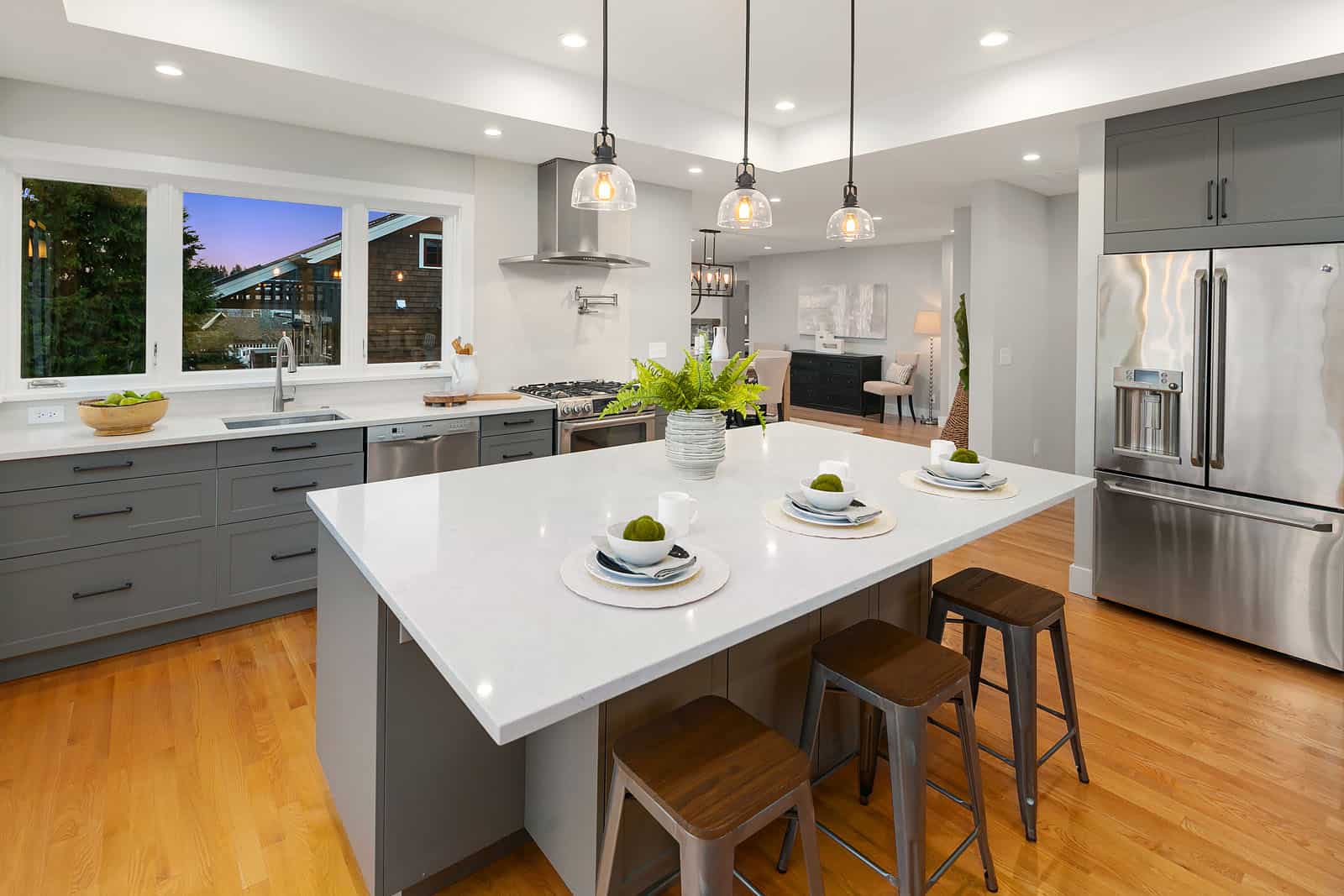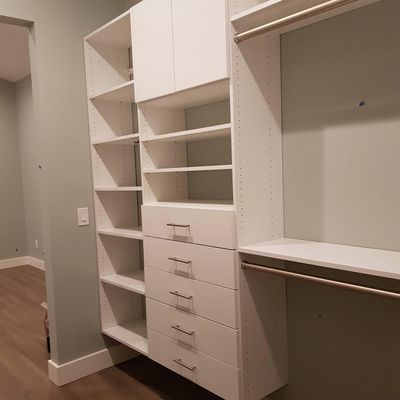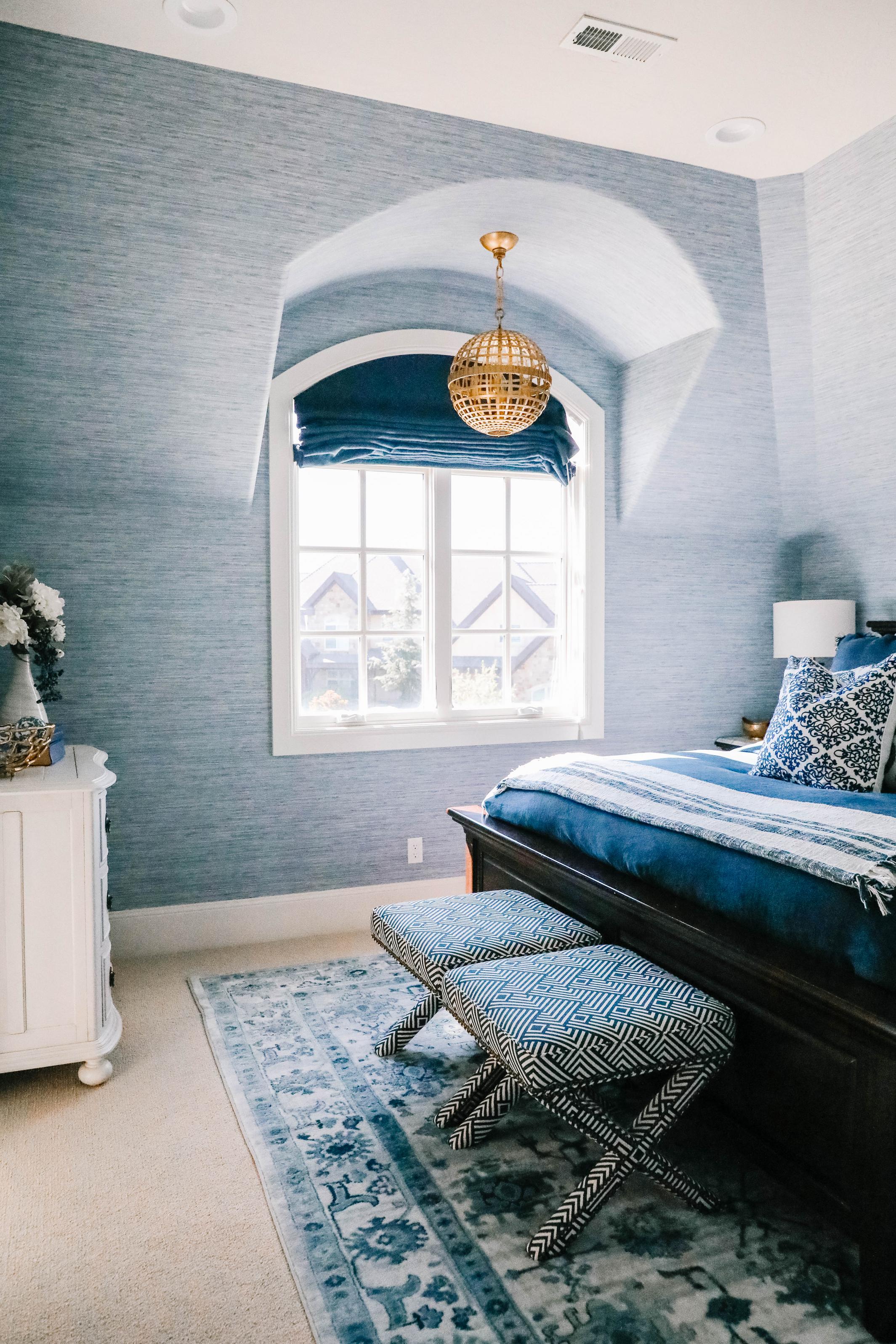
These easy steps will make it simple to repaint your kitchen cabinets. First, remove any veneer that is still attached to your cabinets. Use the veneer strips to make your cabinet's opening. The new pieces can be attached using 3/4-inch brads and construction adhesive. Next, cover the old face frame with a thin layer of veneer. This will cover the veneer completely.
It is important to first remove the drawer fronts or cabinet doors. You can then apply veneer to the existing cabinets. You must work slowly and use sharp blades to apply veneer. After you're done, your cabinets should look like new. TSP is essential to remove grease and stains. To smoothen your cabinets' surfaces, you can use a 150-grit paper sander. Use a tackcloth to seal it.

Before you reface your cabinet doors, you need to measure the size of the opening. Measure the size of your drawers and doors to find the right size. Add the double overlay distance (e.g., 19x21in. Add the double distance to the opening. A 1/2-inch veneer can be used for your new doors. You can then cut the remaining pieces to match the cabinet opening.
You will need to remove the drawer fronts, as well as the door, before you can begin DIY resurfacing the kitchen cabinets. Also, remove trim and hinges. Next, take out any old cabinets and examine them for damage. Then, you can use wood putty to fill in any cracks or holes. For a smoother finish, sand and sand the sides as well as the faces of the cabinets. After that, you can replace the cabinet knobs.
The guide provides detailed instructions for how to reface kitchen cabinets. To install the new doors, you can simply switch the old ones with the new ones. Before you start measuring the cabinet's openings, The original cabinet cannot be resurfaced if it has suffered damage. You must replace the damaged top with a brand new one.

Next, replace the cabinets' doors and faces with new veneer. You can either hire a professional or do it yourself. While it can be difficult to reface cabinets, it can be done yourself. Whether you have no prior experience or are just not confident, refacing your kitchen cabinets can be a rewarding experience. You can save thousands if you are proficient in refinishing.
FAQ
You can live in a house while it is being renovated.
Yes, I can live in my house while renovating it.
Can you live in a house while renovations are going on? The time taken to complete the work will impact the answer. If the renovation takes less time than two months, then no, you can still live in your home during construction. If the renovation takes longer than two weeks, however, you can't live in your home during the construction.
You should not live in your house while there is a major building project underway. This is because you could be injured or even killed by falling objects on the construction site. A lot of heavy machinery is used at the jobsite, which can lead to noise pollution and dust.
This is particularly true if you live on a multi-story home. The vibrations and sounds that construction workers create can cause damage to your property and contents.
You'll also need to cope with the inconvenience of living in temporary housing while your house is being renovated. This means you won't be able to use all the amenities in your own home.
For example, you will not be able to use your washing machine and dryer while they are undergoing repair. It will be difficult to bear the smell of paint fumes as well the sounds that workers make.
All of these factors can create stress and anxiety for you and your loved ones. To avoid becoming overwhelmed by these situations, it's important to plan ahead.
Do your research before you begin renovating your home. You can avoid costly mistakes later.
You can also consider professional advice from a trusted contractor to ensure smooth running of your project.
Can I rent a dumpster?
After completing a home renovation, you can rent an dumpster. Renting out a dumpster is an excellent way to keep your yard tidy and free from debris.
Can I renovate my whole home myself?
Why pay someone to do it for you when you can do it yourself?
It doesn't matter how much you love DIY, there are times when you simply cannot do it yourself. You might not be able control many of the variables.
An example: If your house is older than you think, it might be that the wiring is unsafe. You will need an electrician to inspect and make sure that your system is reliable and safe.
Also, you should consider that some structural damage may not be possible during renovations.
In addition, you might not have the tools necessary to complete the job properly. For instance, if you are planning to install a new kitchen sink, you'll need to buy a special tool called a plumber's snake which is used to clear clogged pipes.
You must also follow plumbing codes to ensure that a licensed plumber is working on your project.
The bottom line is that you need to know exactly what you are capable of doing before you embark on such a big task.
Ask your friends and family for help if you're unsure if the job is possible.
They can provide advice on the best steps to take and places to find more information.
Should I hire an architect or builder?
You may find it easier to hire someone else to complete your renovations if you own the home. You can hire an architect to help you design the perfect home.
How can you remodel a house without spending any money?
When renovating a home without spending money, the following steps should be followed:
-
A budget plan should be created
-
Find out what materials you need
-
Decide where you want to put them
-
Make a list of things you need to buy
-
Calculate how much money is available
-
Plan your renovation project
-
Get to work on your plans
-
Do some research online
-
Ask your family and friends for assistance
-
Get creative!
What should you consider when buying your next home?
Make sure you have enough cash saved to pay closing costs before buying a new house. Refinancing your loan is an option if cash is tight.
Statistics
- They'll usually lend up to 90% of your home's "as-completed" value, but no more than $424,100 in most locales or $636,150 in high-cost areas. (kiplinger.com)
- Rather, allot 10% to 15% for a contingency fund to pay for unexpected construction issues. (kiplinger.com)
- The average fixed rate for a home-equity loan was recently 5.27%, and the average variable rate for a HELOC was 5.49%, according to Bankrate.com. (kiplinger.com)
- A final payment of, say, 5% to 10% will be due when the space is livable and usable (your contract probably will say "substantial completion"). (kiplinger.com)
- According to the National Association of the Remodeling Industry's 2019 remodeling impact report , realtors estimate that homeowners can recover 59% of the cost of a complete kitchen renovation if they sell their home. (bhg.com)
External Links
How To
How can I plan a complete house remodel?
It takes careful planning and research to plan a complete house remodel. Before you start your project, there are many factors to consider. First, you must decide what type of home improvement you want. There are many options available, including kitchen, bathroom and bedroom. Once you have decided which category you wish to work in, you will need to determine how much money you have to spend on your project. It's best to budget at least $5,000 per room if you don't have any experience working on homes. You might be able get away with less if you have previous experience.
Once you have established how much you are able to afford, you will have to decide on how big a job to do. A small kitchen remodel will not allow you to install new flooring, paint the walls, or replace countertops. However, if enough money is available to complete a kitchen renovation, you should be able handle most things.
Next, find a contractor that specializes in the project you are interested in. This will ensure you get quality results and save you a lot of hassle later. Once you have hired a contractor, gather materials and other supplies. Depending on the size of your project, you may need to buy everything from scratch. However, you won't have to worry about finding the exact item you are looking for in the many pre-made shops.
After you've gathered all the supplies you need, it's time to begin making plans. To begin, draw a sketch of where you would like to place furniture or appliances. Next, plan the layout. Be sure to leave enough room for electric outlets and plumbing. Visitors will be able to easily reach the areas that are most frequently used near the front doors. The final step in your design is to choose colors and finishes. To save money and keep your budget low, you should stick to neutral tones.
Once you have completed your plan, it is time to begin building. Before you begin any construction, make sure to verify your local codes. Some cities require permits while others allow homeowners to build without one. To begin construction you will first need to take down all walls and floors. The next step is to lay plywood sheets on your new flooring. Then, you'll nail or screw together pieces of wood to form the frame for your cabinets. The frame will be completed when doors and windows are attached.
There are some final touches that you will need to make after you are done. Covering exposed pipes and wires is one example. To do this, you'll use plastic sheeting and tape. You'll also want to hang pictures and mirrors. Keep your work area tidy and clean at all times.
You'll have a functional home that looks amazing and is cost-effective if you follow these steps. Now that you have a basic understanding of how to plan a house remodel, it's time to get started.